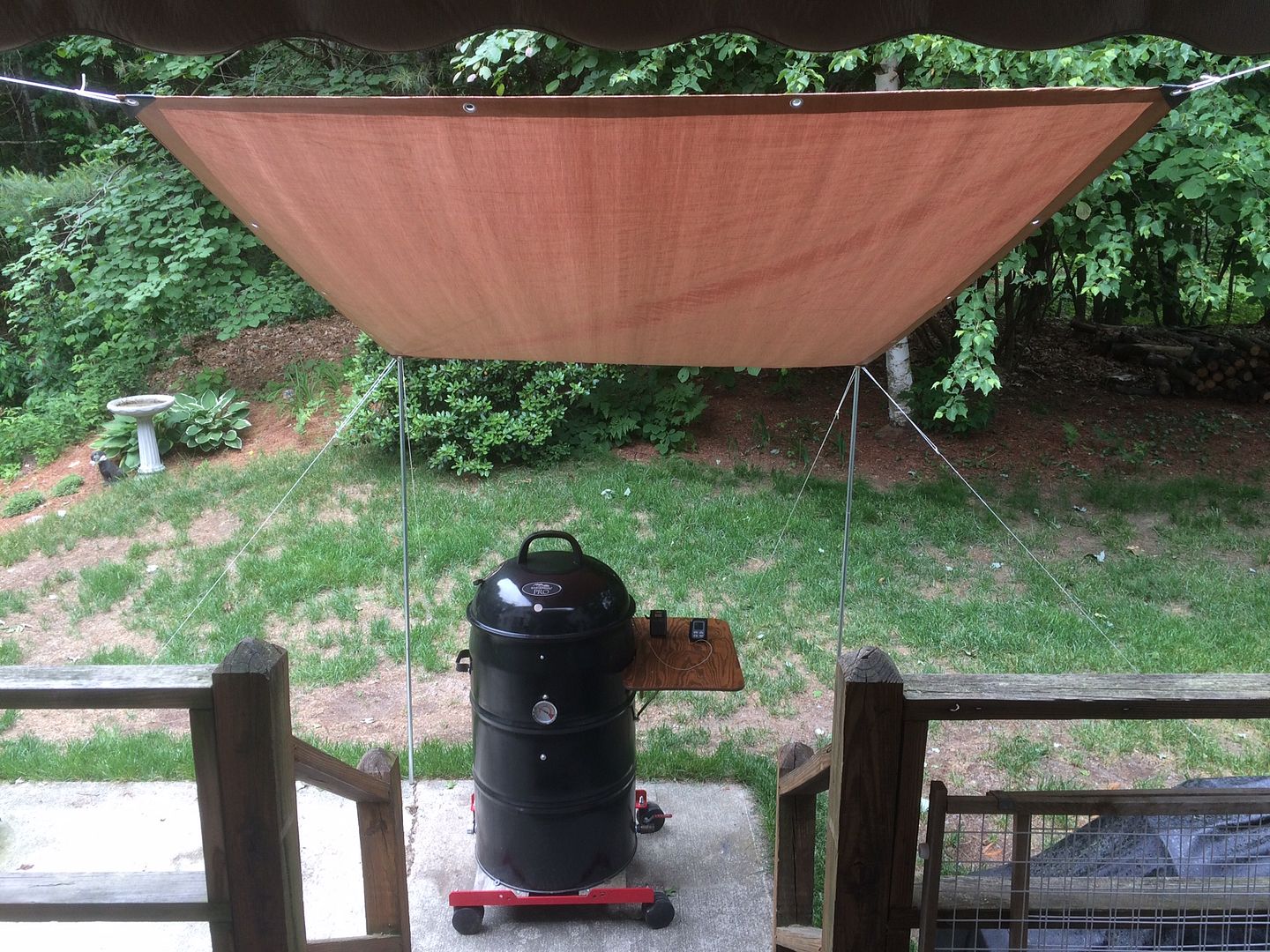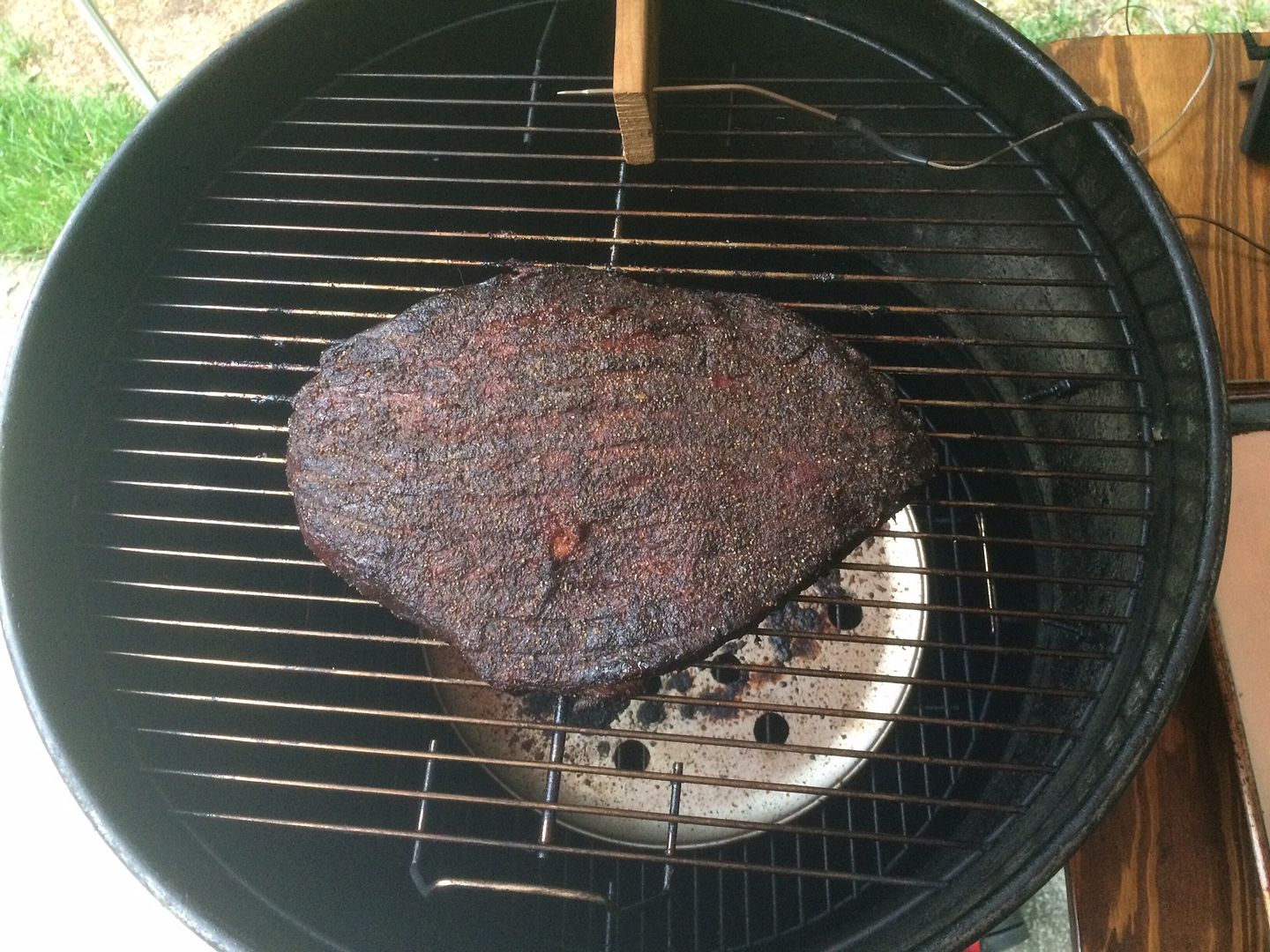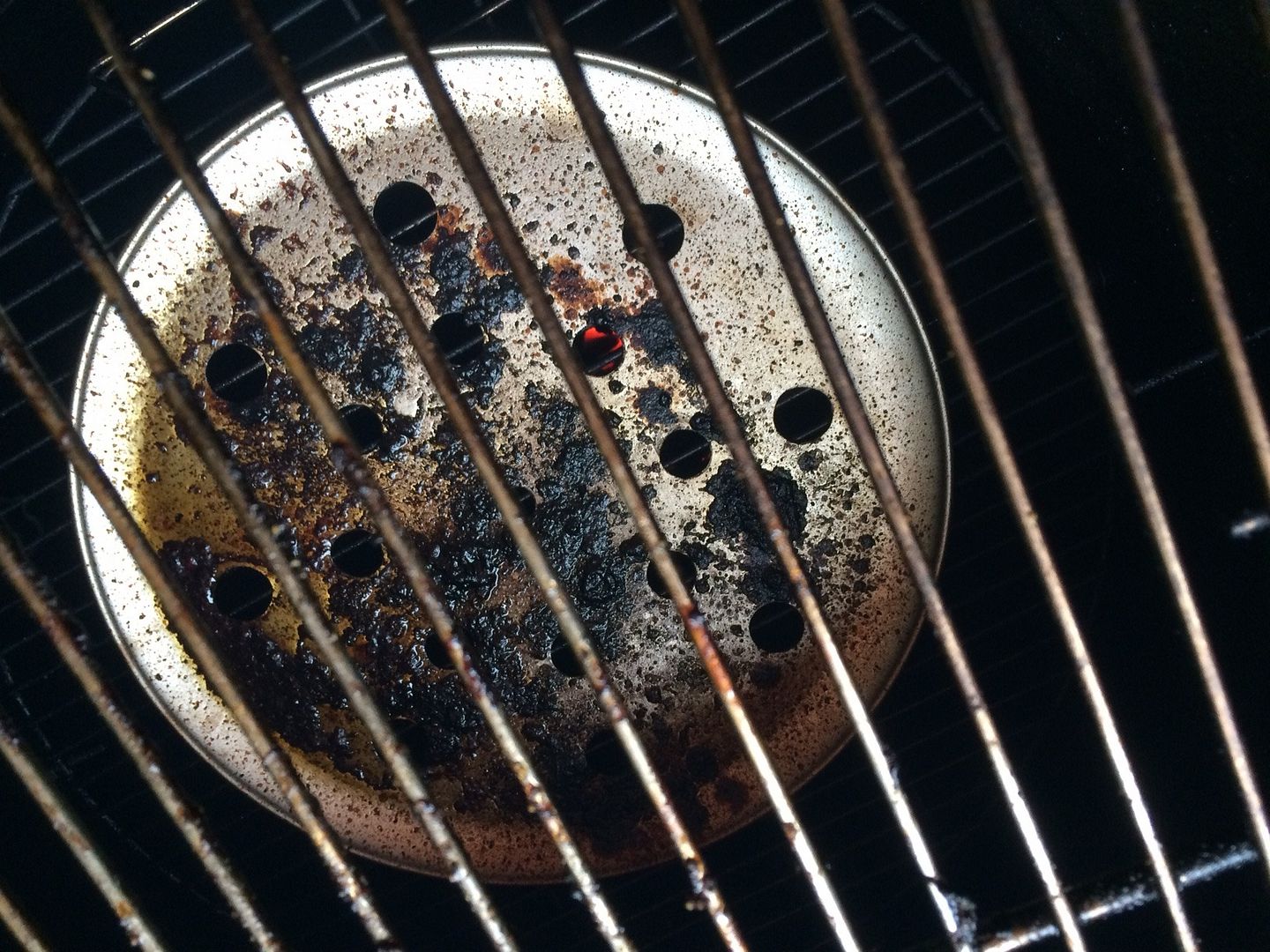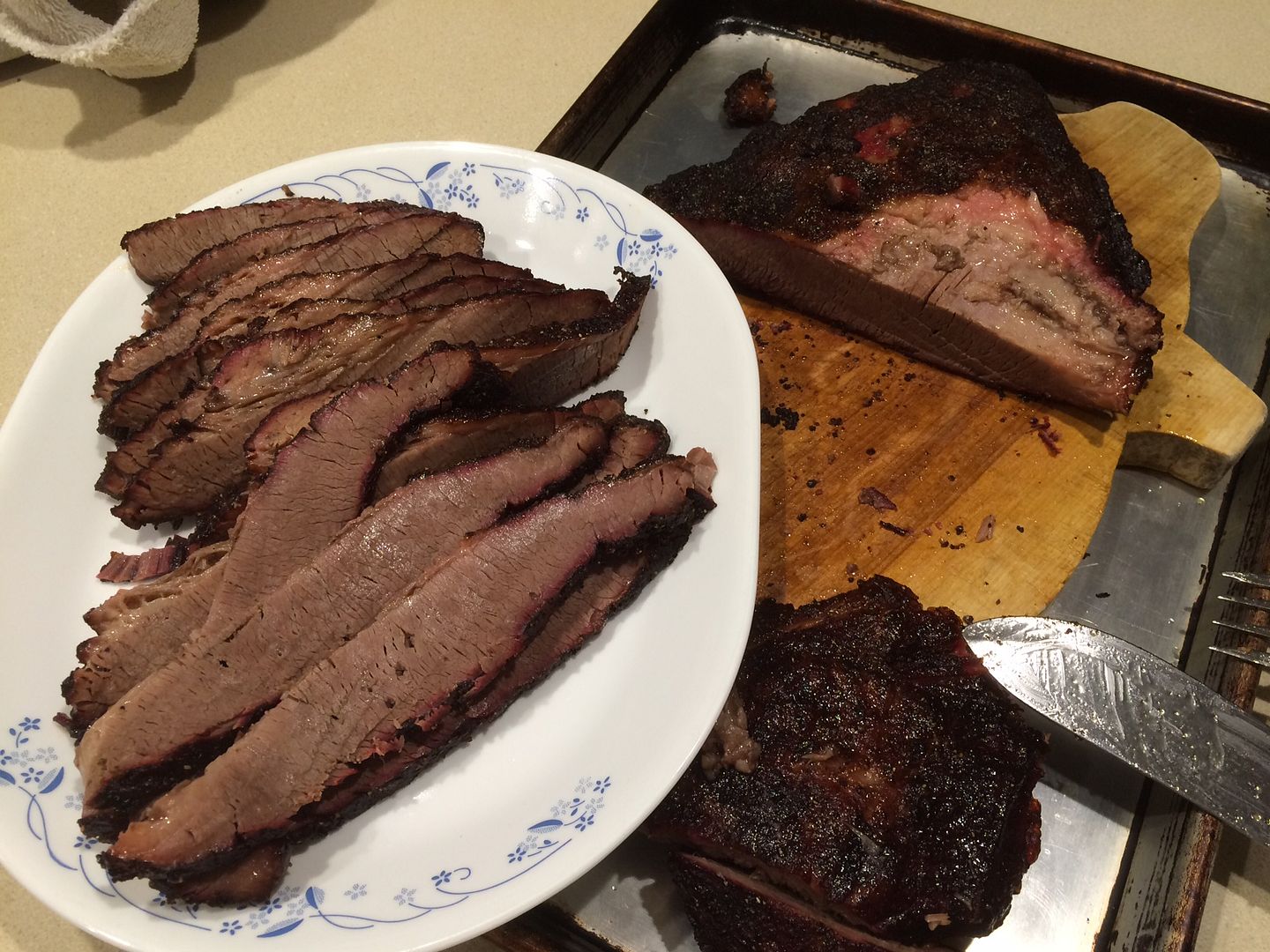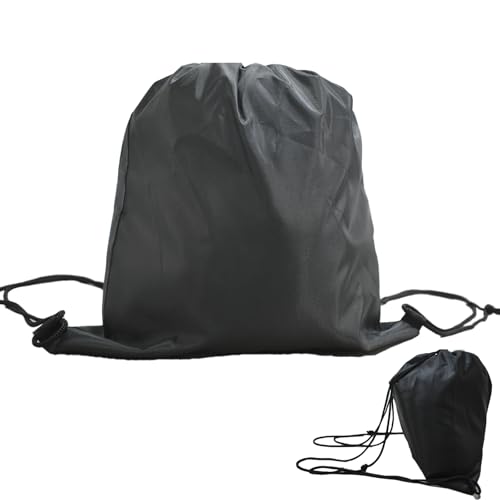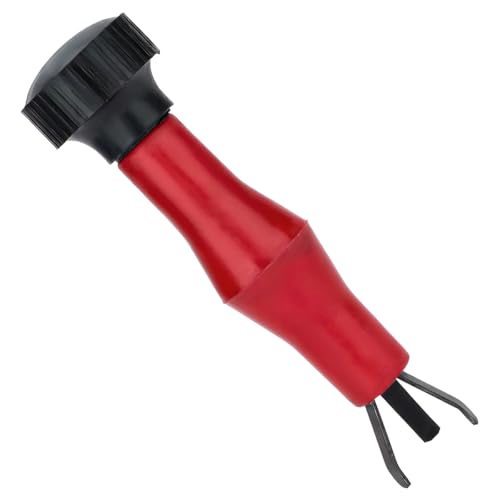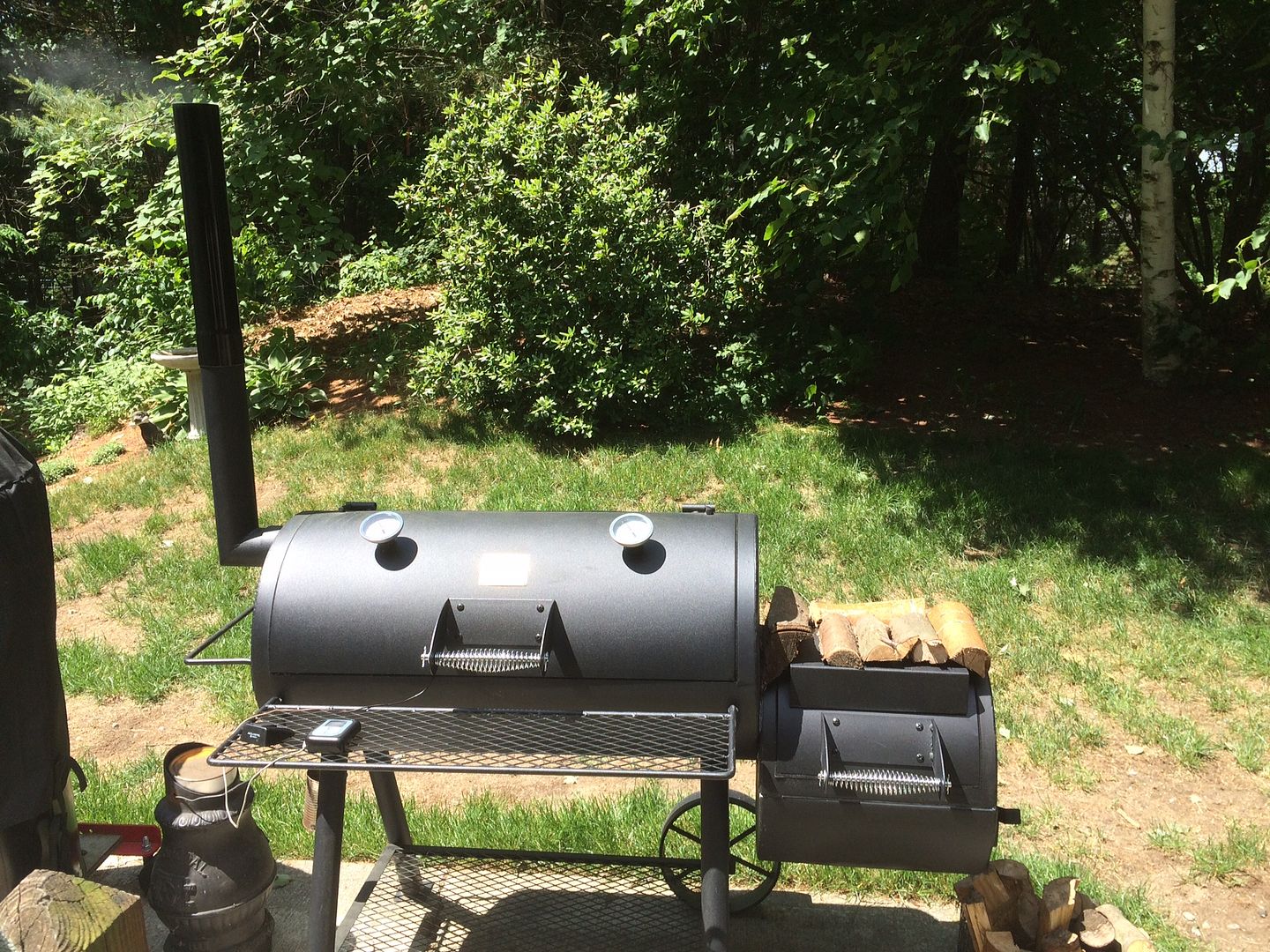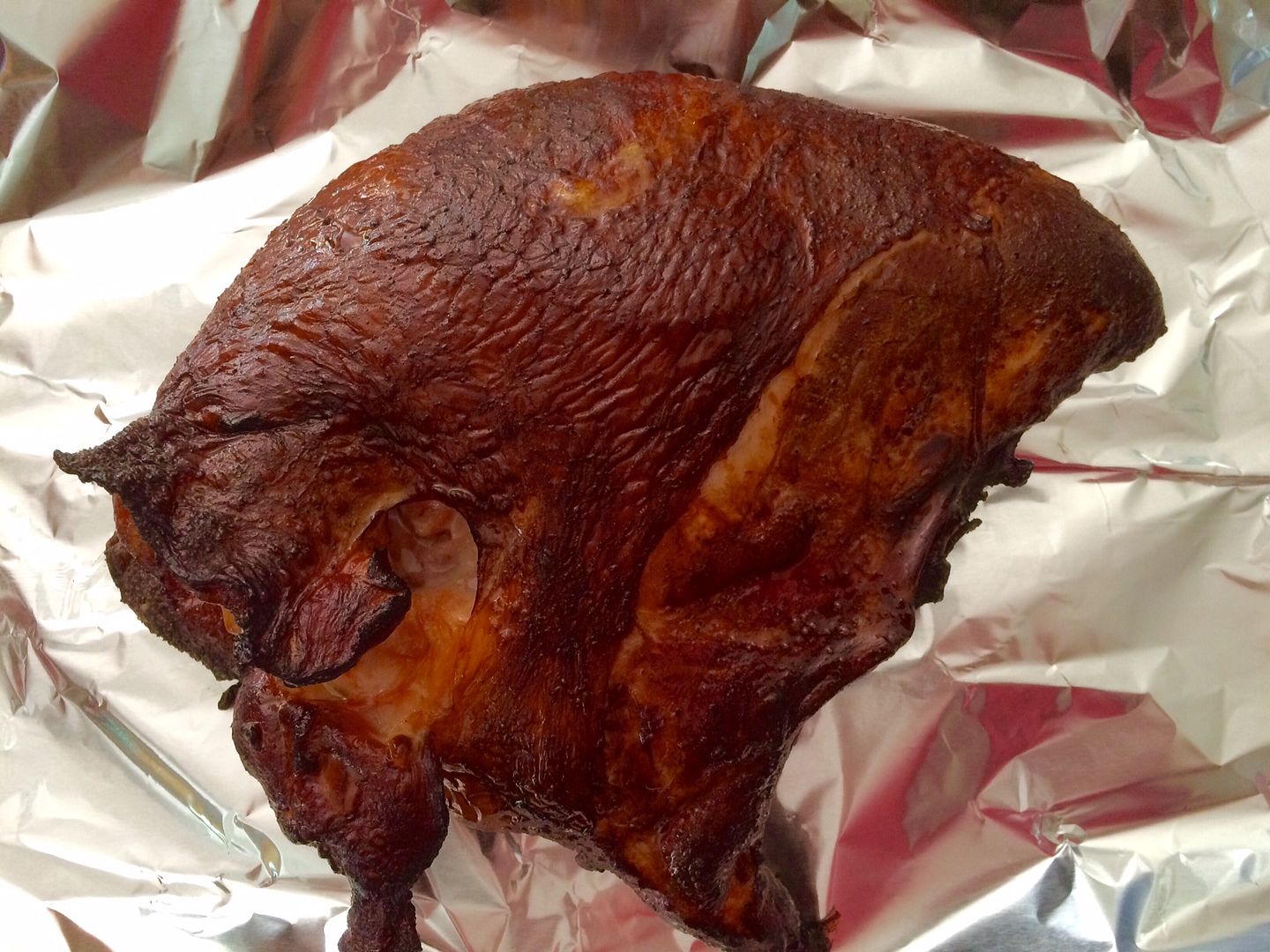It got a little rainy around here yesterday. Good day to be fiddling with a smoker since the riding would have been less than stellar. I have one of those sunsetter roll out awnings over the deck, but it doesn't cover the concrete area the grills sit on, so I rigged up a little bivvy / fly over the Ugly Drum to keep the things dry.
Could use a slightly larger fly next time. This one is the footprint that I use under my 7' x 9' tent. Also, note the UDS is at full temp here and the lack of any visible smoke. This will be important later on.
Up at 4 AM, fired up the smoker and had it up to temp and the meat on the rack before 5. The cooking went pretty much to plan, except I was fighting temperature swings throughout the whole day.
BBQ Guru will be bought before my next long smoke.
I had filled the charcoal basket with Royal Oak lump charcoal with about 8 good sized chunks of Mesquite interspersed in the upper layers of char. I'd never used Mesquite before and heard it can produce a more pungent flavor, so didn't want to go overboard. Apparently, that was a little conservative.
Was up to about 160F internal in ~ 8 hours, so I foil wrapped it for the drive to the top. Was planning to go for 203F, but when I was poking the thermo probe around the meat was feeling pretty soft and didn't want a lump of mush, so I unwrapped it at 198F, and firmed it up with the pit temp a little higher (265 F) to dry the bark. Due to the lack of smoke, and to some extent the crutching, the bark never developed full blackness. It still looked mighty good here about 1/2 hour before I pulled it off.
You can see in the above photo how high the rack is now when in the upper position. I can get away with this because I have a Weber (clone) dome lid for it. It would be too high if using a flat lid. You can also see the Diffuser Plate (Rev 2.0) that I made from a cheap Walmart 16" pizza pan, down on the bottom rack, which is about 5" above the top edge of the charcoal basket. You can also see the screw heads indicating the 3 rack heights in the 1st photo of the whole smoker.
The diffuser plate seemed to work as intended, but I think I will hole saw a few more holes in the outermost ring. It was forcing
too much heat and smoke out against the outside wall of the drum and the center was actually a bit too cool. That also contributed to the lack of blackness on the brisket, no doubt.
Well, as they say, the proof is in the pudding:
This was (by far) may best attempt at Texas Brisket. The meat was still moist and tender, while not being too soft and mushy (like a pot roast). Flavor was clean and the bark was spicy and tasty. I had used Big Bad Beef rub, and sprinkled some more on after the crutch.
It did not have much of a smoke ring, the bark could have been firmer, and the smoke flavor could have been amped up a notch. But all in all it was quite tasty and everyone enjoyed the meal a lot.
In the lessons learned department: I believe that a lot of the smoke flavor and smoke ring that we get are from using charcoal briquettes. Since I was cooking with lump charcoal, that stuff burns so cleanly it really doesn't impart much if any smoke flavor on its own. So, I'll have to load up more flavoring wood chunks, and distribute them throughout the entire basket of char. The flavor was much cleaner than prior attempts using Kingsford, so that was a plus.
And the other lesson was that I really need to spend the money on an electronic stoker if I'm going to be doing any more of these 12 hour marathon cooks. I was trying to rest the leg I banged up dual sporting last week and was up and down adjusting the air inlet every 15-20 minutes.




